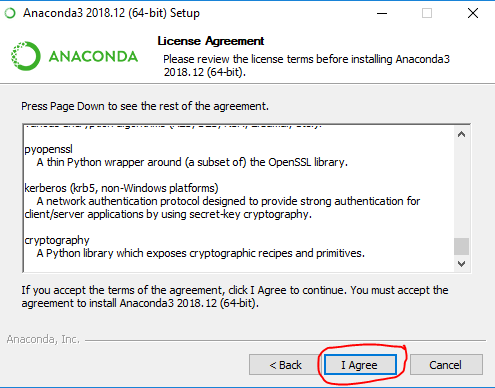

- HOW TO RUN JUPYTER NOTEBOOK ON WINDOWS 10 HOW TO
- HOW TO RUN JUPYTER NOTEBOOK ON WINDOWS 10 FOR MAC
- HOW TO RUN JUPYTER NOTEBOOK ON WINDOWS 10 INSTALL
- HOW TO RUN JUPYTER NOTEBOOK ON WINDOWS 10 WINDOWS 10
- HOW TO RUN JUPYTER NOTEBOOK ON WINDOWS 10 SOFTWARE
This will open the JupyterLab Interface automatically in Chrome. To create both Python 3.6 and a Python 2.7 environments, for example, execute at the prompt the two commands below:Ĭonda create -n py27 python=2.7 Step 7 – Start JupyterLab
HOW TO RUN JUPYTER NOTEBOOK ON WINDOWS 10 INSTALL
If you’d prefer to install each package individually, you can install ipykernel with:Ĭonda install ipykernel Step 6 – Create the desired environments NB: ipykernel is necessary if nb_conda_kernels is to detect the environments. The syntax for the file is the same used in environment files here’s an example: condarc configuration file is not present, it will be generated the first time you use conda config so you may have to do that at this time, for example: conda config -add channels conda-forge condarc configuration file, which is located in the home directory. To automatically install specific packages every time a new environment is created, add the package list to the create_default_packages section of the. So:Ī) check if nb_conda_kernels is installed by executing conda list at the prompt.ī) If you do not see it in the list of packages, then execute conda install -c anaconda nb_conda_kernels Step 5 – Edit the Conda configuration file to create environments with default packages As a result, all those environments will be visible and can be used directly from the JupyterLab interface. The package nb_conda_kernels will later detect all conda environments that have notebook kernels and automatically registers them. Jupyter notebook -generate-config Step 4 – Install nb_condas_kernels If the config file is not present in the home directory, it can be created at the prompt with the command:
HOW TO RUN JUPYTER NOTEBOOK ON WINDOWS 10 FOR MAC
For mac users, use this: c.NotebookApp.browser = 'open -a /Applications/Google\ Chrome.app %s' Then replace the last line, c.NotebookApp.browser = '', with:Ĭ.NotebookApp.browser = 'C:/path/to/your/chrome.exe %s' for example: To set Chrome as the browser for JupyterLab, open the config file jupyter_notebook_config.py (located in your home directory, in ~/.jupyter), find the browser section: I’ve never been able to make JupyterLab work with Internet Explorer, so this is not an optional step for me. Step 3 – Set Chrome as web browser for JupyterLab
HOW TO RUN JUPYTER NOTEBOOK ON WINDOWS 10 SOFTWARE
NB: I realize this is discouraged because it may cause interference with other software down the road, but I’ve found no issue yet (not a guarantee, of course, so do at your own peril), and it is much easier than having to add the path manually. Here I would suggest especially if you want the ability to start JupyterLab from the command prompt, the alternative setting:

Step 2 – Install Anacondaįollow the official installation instructions to the letter, with the exception of step 8.
HOW TO RUN JUPYTER NOTEBOOK ON WINDOWS 10 HOW TO
NB: If you are one of those few still working with Python 2.7 (I was one until last fall), worry not, I will show you how to create a Python 2.7 virtual environment without much effort. Go to the Ananaconda website for the Windows distribution and download the Python 3.8 installer:
HOW TO RUN JUPYTER NOTEBOOK ON WINDOWS 10 WINDOWS 10
Setting up JupyterLab with virtual environments on Windows 10 Step 1 – Download Anaconda I am hoping that even an absolute beginner will be able to follow these instructions, and go from zero to JupyterLab pro. I’ve decided to summarize in this post my installation, which includes setting up JupyterLab and also creating virtual environments. Three times in the last couple of months I’ve had to make an installation from scratch on Windows 10 operated computers, using the Anaconda Python distribution: for a coworker’s desktop computer and my own, and for a friend on a laptop. I guarantee that if you’ve been working with Jupyter notebooks and liked them, you will easily switch to JupyterLab and will never look back, it is only natural (also check Terraforming Jupyter to get a flavor of how much you can customize this environment to suit your needs).

If you wonder if this is the right tool for you, please browse the rich documentation on the JupyterLab Interface and on how to work with Notebooks, then make sure to watch the 2018 Scipy tutorial. I love JupyterLab, I really do! In my experience to date it proved to be the best environment for prototyping scientific computing applications interactively using Jupyter notebooks. last tested successfully on April 25th, 2021.


 0 kommentar(er)
0 kommentar(er)
